Is your Hungarian company issuing receipts or invoices? If you issue receipts, get ready for the introduction of the electronic cash register which allows better reporting towards the Tax Authority and offers better customer experience.
When to issue invoices and receipts
Whether your company issues invoices or receipts depends on your business model.
The standard document for logging transactions is the invoice, and it lists the details of both seller and customer. Invoice is called “számla” in Hungarian, but sometimes it is also called “áfás számla” (invoice with VAT) because it must indicate the VAT content of sales. An invoice is always required for B2B transactions.
Some sellers, especially those that mostly handle B2C transactions, are allowed to issue receipts instead of invoices. A receipt or “nyugta” will list fewer details than an invoice; most importantly, it doesn’t need to indicate the data of the customer nor the VAT content of the items.
Below you can see the main differences between invoices and receipts. For more information, click here.
Invoice | Receipt | |
Type of transaction | B2C, B2B | B2C |
Seller’s data | Required | Required |
Customer’s data | Required | Not required |
Sale’s data | Date | Date |
Sale’s total | No limit | max. HUF 900,000 |
Can be issued from | Invoicing software | Invoicing software |
Expense | Can be booked as an expense | Cannot be booked as an expense |
Reporting | One by one | In bulk, totals broken down for VAT content |
Reporting deadline | Within 4 days for VAT content under HUF 500K, within 1 day above | Within 4 days for VAT content under HUF 500K, within 1 day above |
Issuing invoices and receipts
Both invoices and receipts can be issued either manually or by software. At the same time, some sellers are required to use automatic cash registers, typically in retail (see a full list here).
The option for issuing invoices and receipts manually, with the help of official invoice and receipt booklets that can be bought at stationery stores, is in fact a relic, and it is becoming more and more cumbersome with the introduction of new reporting requirements. Right now, invoices must be reported to the Tax Authority one by one, within 4 days after they are issued (or within 1 day if their VAT content is above HUF 500,000). Receipts can be reported in bulk, listing only the grand total and the VAT content for any given day.
As a result, issuing invoices and receipts is becoming increasingly common with invoicing software or cash registers, both of which offer direct connection to the Tax Authority, this way allowing automatic reporting upon the creation of each invoice or receipt.
Upcoming changes
In July 2025, the “electronic cash register” has been introduced, which is available both as hardware (in new, electronic cash register machines) and as software (in a cloud-based solution for small sellers).
The “online cash register” machines that are currently in use may remain operational until July 1, 2028. If you are operating one or more of these, you have plenty of time to replace them. If you are planning to buy new machines for your business, it will make sense to invest in the new electronic cash registers, which run on the new electronic cash register software, and offer additional benefits to both sellers and customers, such as paperless documentation (read more here).
Small sellers who issue receipts manually has to prepare for a change sooner. Starting from September 1, 2026, they will need to report receipts separately instead of the current bulk solution. By then, it will make sense for these businesses to switch to one of the electronic cash register solutions. The cloud-based version will probably be more cost-effective for them, even if it should be accompanied by the purchase of a receipt printer.
At the same time, customers can already download the eNyugta app to their phones. This will allow them to store receipts on their phones through a QR code, this way reducing paper waste while still not being required to provide personal data for the transactions. For now, this app is not exactly useful, but as sellers gradually switch to the new electronic cash register solutions, it will save customers the hassle of storing paper-based receipts.
Company setup and invoicing
When starting a new business in Hungary, it is essential to learn the difference between invoices and receipts, and make informed decisions about which you should apply during your operation. When you set up your company through Helpers, you will get all the assistance you need to find your way in the maze of Hungarian bureaucracy, including help with accounting and bookkeeping. Contact us today, and get started now.
Was this article useful? Follow us on Facebook and never miss an update about living, working, and doing business in Hungary.

